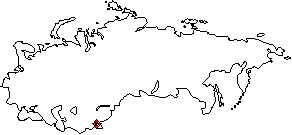CONTENTS
IntroductionForeword
Language Groups
Tribes and Dialects
Order the book
The Peoples
of the Red Book
Abazians (Abaza)Abkhaz
Aguls
Akhvakhs
Aleuts
Altaics
Aliutors
Andis
Archis
Asiatic Eskimos
Bagulals
Baraba Tatars
Bartangs
Bats
Bezhtas
Botlikhs
Budukhs
Central Asian Jews
Chamalals
Chukchis
Chulym Tatars
Crimean Jews
Crimean Tatars
Didos
Dolgans
Enets
Evens
Evenks
Georgian Jews
Godoberis
Hinukhs
Hunzibs
Ingrians
Ishkashmis
Itelmens
Izhorians
Kamas
Karaims
Karatas
Karelians
Kereks
Kets
Khakass
Khants
Khinalugs
Khufis
Khvarshis
Kola Lapps
Koryaks
Kryz
Kurds
Lithuanian Tatars
Livonians
Mansis
Mountain Jews
Nanais
Negidals
Nenets
Nganasans
Nivkhs
Nogays
Orochis
Oroks
Oroshoris
Peoples of the Pamirs
Roshanis
Rutuls
Selkups
Shors
Shughnis
Tabasarans
Talysh
Tats (Tatians)
Tindis
Tofalars
Trukhmens (Turkhmens)
Tsakhurs
Udeghes
Udis
Ulchis
Veps
Votes
Wakhs
Yaghnabis
Yazgulamis
Yukaghirs
visit the guestbook or mail comments to the webmaster

THE BARTANGS
Habitat. The Bartangs live in the area between the villages of Dasht and Basid, above the Roshanis, in the valley of the Bartang in the Pamirs. The largest villages are Sipandzh (Bartang on some maps), Darzhomch, Razudsh and Basid. Administratively they belong to the district of Roshani in the autonomous territory of Gorno Badakhshan, which is a part of Tadzhikistan.
The valley of Bartang, one of the highest in the Pamirs and with a severe climate, is mainly swampy and covered with sand. The main areas suitable for habitation are on the Bartang delta. The population in the valley is sparse. There is very little arable land. Sipandzh, the centre of the previous Bartang district, is 57 km from Roshani and can be reached by car. The village centres of Basid and Savnob (Roshorv, Pasor, Kudara and other villages) are better reached from the east, via Murgab. There is no road to Ravmed (Ravmid) or to any other village.
The population of the Bartangs was given in the official list of Tadzhik villages (Stalinabad, 1932) as 2,049 people. Two years later, at the time of the 1939 census, it was 3,700.
The Bartangi language belongs to the Shughni-Roshani or northern subgroup of the Pamir languages in the Iranian group of Indo-European languages. It differs from the other Pamir languages, especially from Khufi and Shughni. There are two dialects: Basid and Sipandzh (Sipondzh). The former is mainly spoken in the village of Basid, the latter in Sipandzh (Sipondzh) and in Ravmid. There are phonetic differences between them. The Basid dialect is similar to the Oroshori language, the Sipandzh dialect to Roshani. The influence of Roshani is especially strong among the people in the village of Ravmid.
The language, spoken by the people in Khufi and Badzhu, has features in common with the neighbouring Shughni.
History. Massive resettlement took place in these parts in the 1950s, so that by 1959 the number of Bartangs had been reduced to less than a thousand -- one third of the figure for 1939 (N. Ginsburg). Since 1959 the population of the Bartang valley has been on the increase. The empty Ravmed (Ravmid) is reborn.
Research. Previous to 1916 the Bartangs and their language were unknown to Europe. In 1916 a short research paper "Notes zur le yazgoulami, dialecte iraniren des confins du Pamir" that included some Bartangi words was published, posthumously by French linguist R. Gauthiot. The first text published in Bartangi was a lullaby, in 1924.
REFERENCES
- И. И. Зарубин, Бартангские и рушанские тексты и словарь, Москва -- Ленинград 1937
- Н. Карамхудов, Бартангский язык, Душанбе 1973
- В. С. Соколова, Бартангские тексты и словарь, Москва -- Ленинград 1960
- Труды Памирской экспедиции 1928 г., Ленинград 1930
LV
baraba_tatars | bartangs | bats